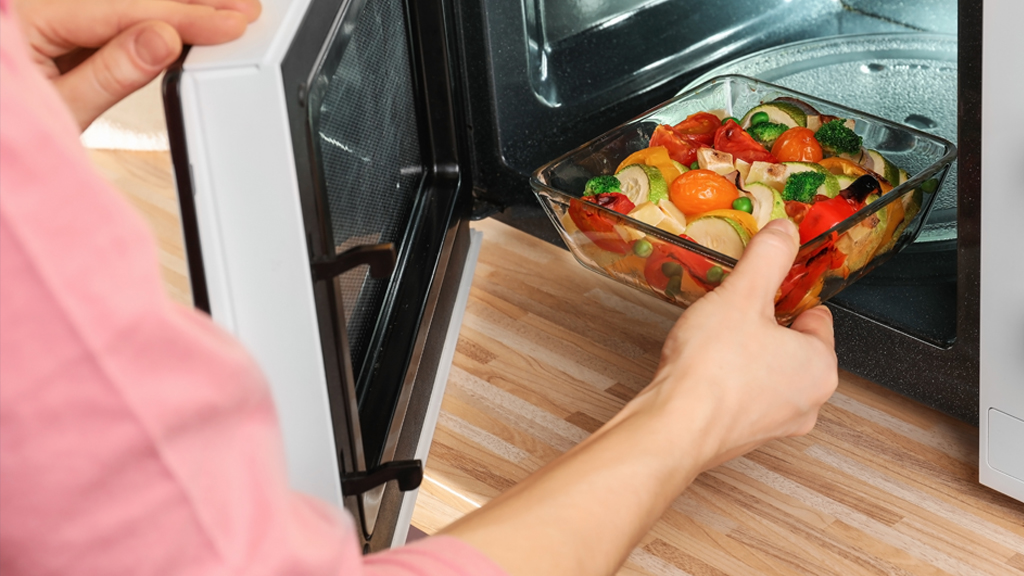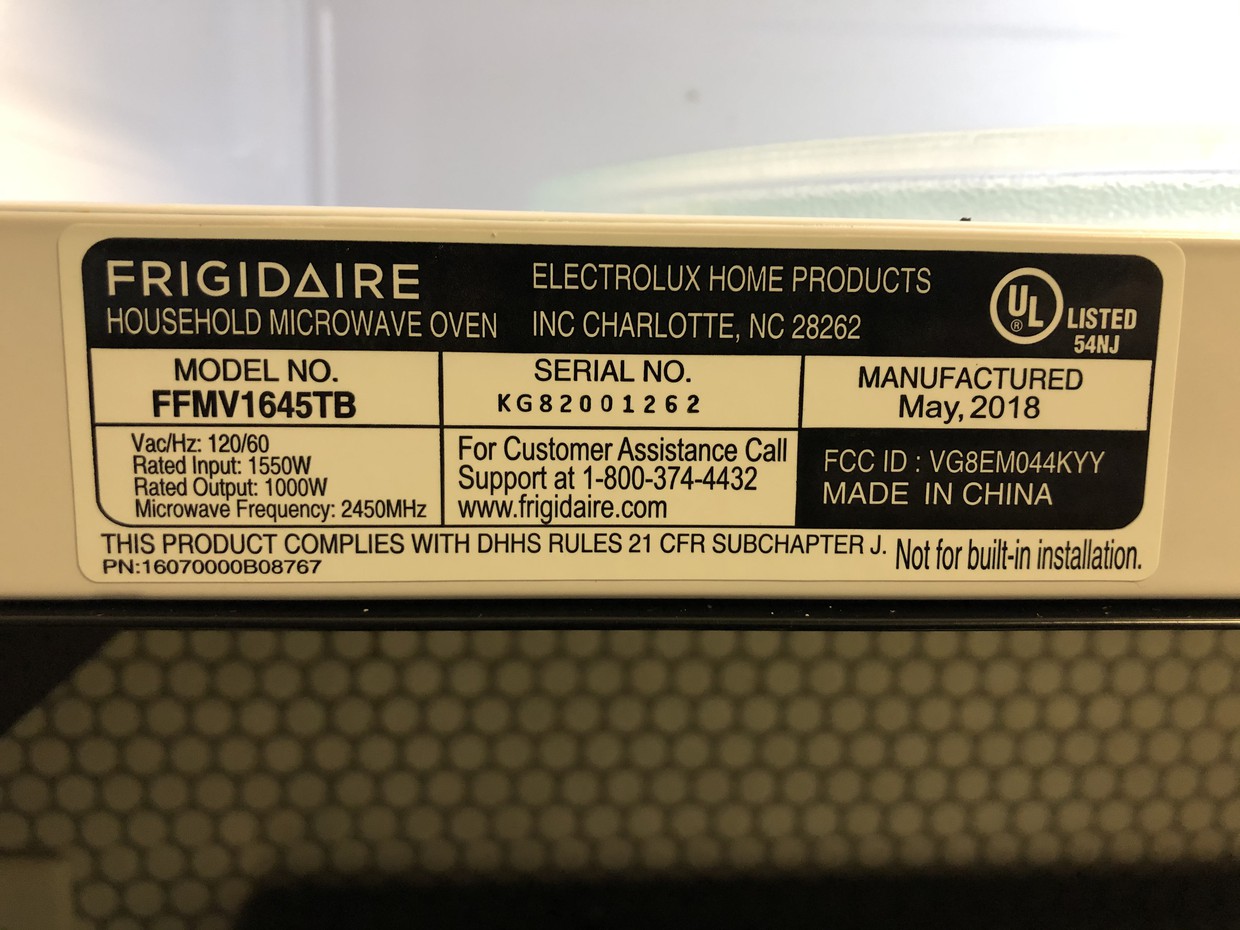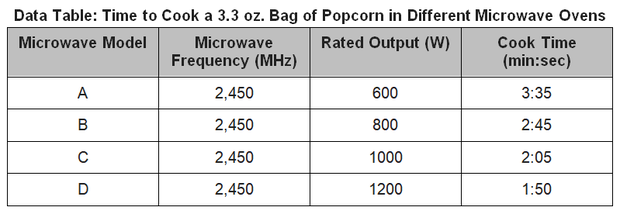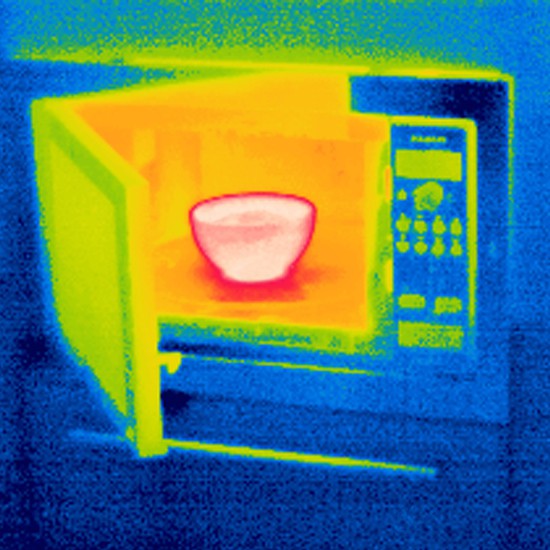Middle School | Daily Do
Why Do Some Microwaves Cook Faster?

Crosscutting Concepts Disciplinary Core Ideas Is Lesson Plan NGSS Phenomena Physical Science Science and Engineering Practices Three-Dimensional Learning Middle School Grades 6-8
Sensemaking Checklist




Introduction
Popping popcorn or heating up other foods in a microwave oven is a common experience for most middle school students, and they may have noticed that some microwave ovens take longer than others to pop those last few kernels of popcorn. In today's task, Why Do Some Microwaves Cook Faster?, students use evidence from multiple sources (hands-on exploration, data table, and online resources) to construct an explanation of how wave properties account for different cooking times in different microwave ovens.
Experiencing the Phenomenon
Ask students if they have ever popped a bag of popcorn in the microwave and whether they have used different microwave ovens to do so. (Optionally, you could use a microwave oven to pop some popcorn to share with your students during or after this discussion.) Ask whether they have noticed that different microwaves take different amounts of time to pop the same amount of popcorn. Ask students why they think this is true and have them share their ideas with a partner.
Next, ask students how they think microwave ovens cook food. Give students time to think independently and record ideas. Then ask students to share their ideas in a small group. As you move from group to group, you can use the following questions to probe students’ background knowledge.
- What is a wave?
- What are some examples of waves in everyday life?
- What are similarities between different types of waves? What are differences?
- How do light, radiation, and waves relate to each other?
- (If students bring up electromagnetic waves) How do we use or encounter electromagnetic waves in everyday life?
Students may have many different ideas, but some students are likely to share the idea that microwave ovens somehow use waves or radiation to cook food. Students might use terms like power or energy to support their ideas. Tell students every microwave oven has a sticker on it that lists important information specific to that particular model. Share the image below, or use the specifications sticker from your microwave oven.

Tell students you have some data that might help them start to make sense of the information on this sticker. Ask students to create a t-chart and then write “Notice” on one heading and “Wonder” on the second. Tell them to record observations in the notice column and questions in the wonder column. Share the data table below. Students are likely to notice that the frequency is the same for all four ovens but that the rated output varies. They are also likely to notice the pattern that cooking time decreases as the rated output increases. Students may have questions about the value and units for frequency and output.

After students have a chance to review the data, ask them to share their observations with a partner. Next, ask students to share observations and questions publicly. Record them on a display board (projection screen, white board, dry erase board, chalkboard, etc.).
Say to students, "Many of us have questions about how the 'rated output' can be different for different ovens when the frequency stays the same. Does it make sense to answer this question first?" Students may not know the term frequency and at this point in the lesson, this is OK.
Exploring Wave Properties
Say to students, "Let's see if we can use this rope to model waves to help us explain why the microwaves have different cook times for popcorn when the number representing frequency is the same."
Note: As an alternative to the hands-on exploration, students can use the PhET Simulation Wave on a String to explore wave properties.
Give each pair of students a length of rope (about 6 ft. in length and ¼” in diameter) and tell them they will be using the rope to model waves and look for patterns between different types of waves.
- Tell students to work with their partner to make simple waves along the floor with their rope. Students will likely move their arms back and forth to create waves in the rope. Ask students how they know they've made a wave. What characteristics did they observe that told them they successfully created waves?
- Challenge students to create a consistent wave that travels smoothly along the rope. (This will make it easier for students to compare the motion of their waves as students make adjustments.) Ask them to count how many waves pass a specific point on the floor in 10 seconds.
- Next, ask students to change their waves so that more waves pass the point in 10 seconds. Then, challenge them to adjust their waves so that fewer waves pass the same point each second. Ask student pairs to notice any patterns they observe as they make these adjustments. You might ask, "How did you make more waves pass this point in 10 seconds? Fewer waves?" and "What is similar between all the waves you created? What is different?"
- Next ask students to return to the waves they started with. Ask students how they figured out how to do this. Listen for students to say they counted the waves passing the point in 10 seconds and used marks on the floor to make the waves 'rise and fall' the same distance as before.
- Ask students to make waves that are further apart and then closer together than their original waves. Ask students to notice any patterns they observe between the far-apart and close-together waves and/or in what they had to do differently to make waves move closer together and further apart.
- Finally, ask students to make waves that are bigger or smaller than their original waves. Can they make the waves bigger and smaller without changing the number of waves that pass a certain point in 10 seconds? Ask students to notice any patterns they see as they make these adjustments.
Say to students, "Use your observations of the different rope waves you modeled and the patterns you noticed to make a claim about what is DIFFERENT between the microwave ovens (explains why some microwave ovens have faster cooking time than others)." Give students independent thinking time and ask them to record their ideas. Then, ask students to share their ideas in small groups. You might use partner conversational supports to facilitate the small group discussion.
Speaker: I think ______ because _______.
Responder: I agree/disagree because _______. OR I heard you say ______. What evidence is that based on?
Make sure students have an opportunity to change roles.
Bring the class back together. Consider holding an building ideas discussion using prompts such as:
- What are some of your claims?
- How did you arrive at that conclusion? (What's your evidence?)
- ___ and ___, you made similar claims. Did you have the same evidence?
- ____, what do you have to say to ___ about their idea? It sounds pretty different from yours.
Students may disagree on what causes the microwave ovens to have different cooking times for popcorn. Some students may claim waves that are closer together cause faster cooking times in microwave ovens while others may claim higher waves cause faster cooking time. Some other may say both closer waves and higher waves cause the faster cooking for popping popcorn.
You might say to students, "What else do we need to find out? What might we do next?"
Obtaining Information and Constructing an Explanation
Students can use some or all of the online resources below to obtain information about waves and their characteristics and behaviors. The Physics for Kids website and UNC-TV interactive lesson go beyond the scope of this Daily Do and build a wide range of knowledge around waves. The three videos are embedded in the interactive lesson, but they could be used on their own to target more directly the science ideas addressed in this Daily Do.
- Physics for Kids: Waves
- Light Waves: Interactive Lesson | UNC-TV Science
- Video: Introduction to Waves | UNC-TV Science
- Video: Measuring Waves | UNC-TV Science
- Video: Electromagnetic Waves | UNC-TV Science
You can use the following questions to probe student understanding of the online resources and to transition back to the microwave oven phenomenon.
- In what part of the investigation did you model "frequency"? How would you describe high frequency waves? Low frequency waves?
- When we looked at the microwave oven data, we noticed all the microwave ovens have the same frequency. Can you explain in your own words what that means?
- How are wave frequency and wavelength - or the distance between waves - related? In what part of our investigation did you model changing the wavelength of rope waves?
- (Draw two waves of the same frequency but different amplitudes.) What is similar between these waves? What is different? When in the investigation did you model waves with the same frequency but different amplitudes or wave heights?
- What makes a microwave a microwave? (What do microwaves all have in common?)
- Microwaves are very efficient at heating water, but all electromagnetic waves can cause matter to heat up. Why is this?
After students have engaged with the online resources, revisit the data table and remind students that the class is trying to figure out why some microwave ovens cook foods faster than others. Students might still have questions about the units listed on the data table. Tell students that the basic unit for frequency is Hertz, or cycles per second, and the prefix mega means one million. Therefore, the frequency units used in the table represent millions of waves per second. You might ask a few students to describe what is meant by frequency in their own words and/or for students to draw two sets of waves with the same frequency. How can they tell by looking at the drawing the frequency of the two waves they've drawn are the same?
Ask students to revisit their claim about why the microwave ovens have different cook times for popping popcorn. At this point in the lesson, students should let go of the idea that the distance between the waves causes the different cook times. Students will likely move to the idea that a difference in wave height - or amplitude - can explain the different cook times for popping popcorn. You might ask students to identify scientific information from the readings/videos that supports their evidence from the microwave oven data table and rope wave investigation. Ask students to return to their small groups and share their revised explanations. Consider using the same partner conversational supports as before.
Engage students in a building consensus discussion. You might ask the following questions:
- How are these explanations similar? How are they different?
- Both groups seem to be using the same term but in a different way, could someone explain the difference?
- What ideas are we in agreement about?
- Where should we go next to help us with areas where we are not sure/not in agreement?
The goal of this discussion is to help students understand that the energy of the waves in different microwave ovens is proportional to the amplitude of those waves. That is, a microwave oven with a higher wattage output is generating waves with higher amplitude.

Extending the Learning
You can extend students' learning from this task by guiding them to explore other phenomena related to waves and the electromagnetic spectrum.
- Damage Caused by Sound and Ocean Waves: Share this prompt with students and have them respond orally or in writing. Students may be able to respond based on their understanding of the microwave phenomenon, or it may be helpful to obtain additional information through online research. You can obtain background information related to ocean waves in the NSTA Book Chapter, Waves, linked in the collection for this Daily Do.
Sound waves at normal levels allow us to take in information from the world around us. However, very loud sounds can damage structures in our ears and lead to permanent hearing loss. Ocean waves always cause changes to coastlines, but large waves caused by storms can cause significant damage. Tsunamis, which are very large waves caused by earthquakes or volcanoes, can be devastating to coastal areas. Use what you have learned about waves to explain why large ocean waves and loud sound waves can both cause damage.
- Variation in Light Intensity Across Sources and Distances: Smartphones include built-in light intensity sensors to provide data for adjusting screen brightness and photographic flash settings in different light conditions. Students can use a free smartphone app to access readings from these sensors and to investigate the intensity of light from different sources or under different conditions. Students might investigate the effect of different light sources (sunlight vs. incandescent bulbs vs. fluorescent bulbs), distance from a light source, or other factors. This Scientific American article, "Science with a Smartphone: Measure Light with Lux" provides a good introduction to this extension.
- Using the Electromagnetic Spectrum to Visualize Phenomena on Earth and in Space: We see the world through the visible light spectrum, but technology allows us to use other parts of the electromagnetic spectrum to visualize the universe in new ways. Students can conduct online research to explore how other parts of the electromagnetic spectrum are used in fields like medical imaging, astronomy, and industry. For example, the image above, from Hot stuff: the physics of microwave ovens, shows an infrared thermal image of a bowl of hot food coming out of a microwave oven.


